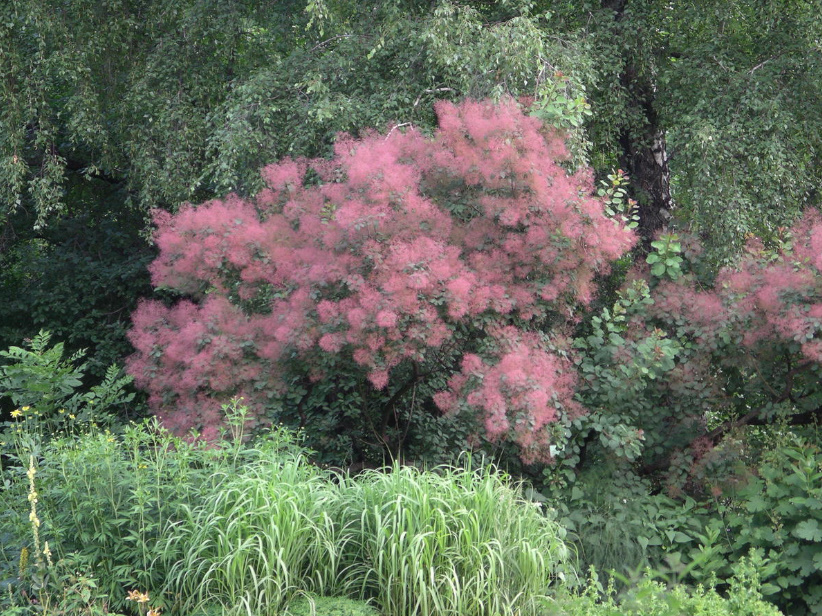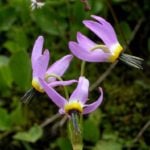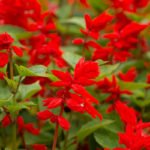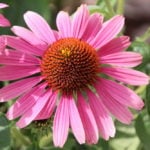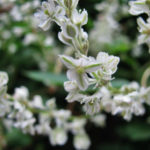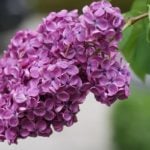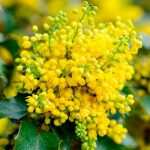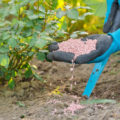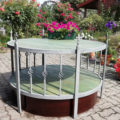It is impossible not to pay attention to the scumpia (Cotinus coggygria, or Rhus cotinus) in the second half of summer, when it is enveloped by a cloud of aerial inflorescences in the form of lush plumes of long filamentous outgrowths on the fruits. These threads range from white to purple colors, but most often they are pink shades. Unlike the nondescript greenish flowers, it is the threads that form the decorative qualities of the plant, at the same time awarding it the name “wig tree”.
The very folk names of the scumpia reveal the essence of its appearance. In English—speaking countries, it is called a “smoking bush” – for the panicles of inflorescences. In the south of Russia, the scumpia was known as the “sparkly tree” — for the bright colors of autumn foliage. As a technical culture, it was called “leather tree”, “Venetian sumac”.
The brightest colors are given by the scumpia in autumn, when its simple round-egg-shaped, rather large olive-green leaves are painted in juicy fiery shades of orange, yellow and purple. Along with scarlet and maples, scumpia is one of the most striking plants at this time of year.
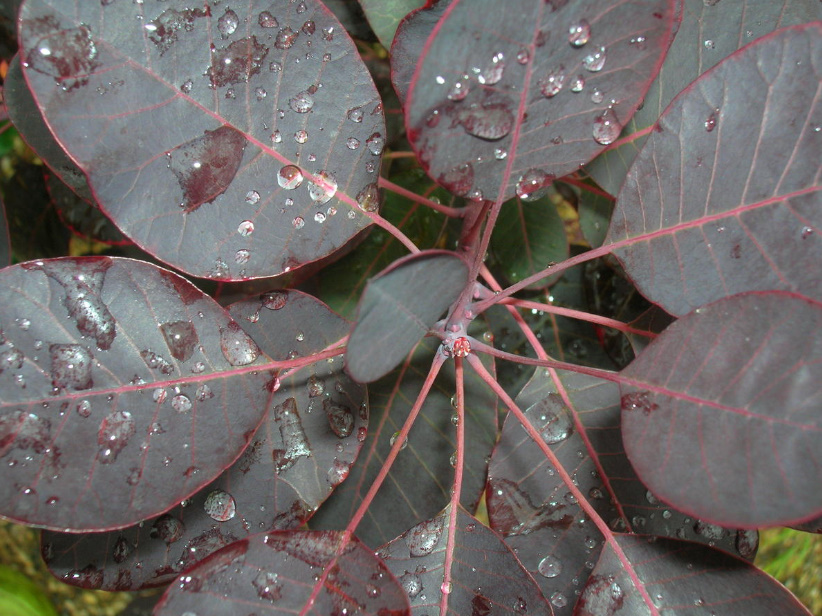
Scumpia is often grown in ornamental gardens. She has a beautiful and rare umbrella-shaped crown in adulthood, and she lives up to 60-100 years. Scumpia tolerates heavy pruning well, which is especially important for areas where it can freeze. If the trunk is damaged, the plant tends to form a bush-like shape. The decorative effect of the leaves only increases. From the usual 3-8 cm, they increase to 10 cm in length, they become brighter in autumn. However, in such a situation, it is not necessary to wait for abundant flowering, because inflorescences are formed on the tops of shoots, so it is desirable to preserve the upper bud.
Selection of scumpia varieties
Especially carefully you need to approach the choice of a seedling for the middle lane. It is believed that most garden varieties of scumpia are less frost-resistant than representatives of the northern populations of the species, because in nature it is widespread from the Mediterranean to China. Often varietal scumpia is forced to be grown as an ornamental deciduous perennial, because it freezes to ground level.
It is especially difficult with colored forms bred in Europe. Their winter hardiness is limited to the 5th zone of endurance. As an example, let’s take the most famous variety ‘Royal Purple’. It preserves last year’s shoots only in the most favorable conditions, and therefore requires spring pruning “on the stump”. There is a more stable purple form of Cotinus coggygria f. rigrigeis, but it is not widespread yet.
There are varieties with a particularly bright red-orange autumn color of the leaves, for example ‘Flame‘ and ’Red Beauty’. The most difficult and pampered was the golden variety ‘Golden Spirit’ (‘Ancot’). Young seedlings of these varieties often freeze completely even under shelter.
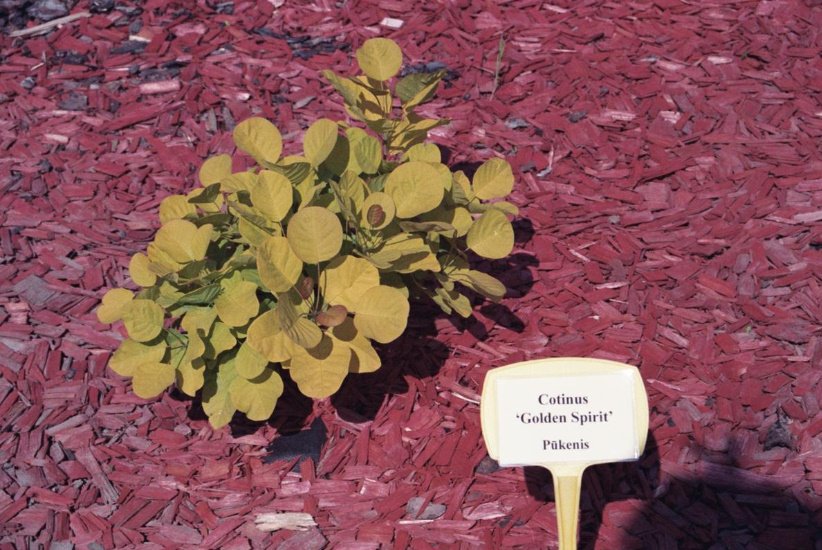
The new hope of gardeners was the variety from the Netherlands ‘Young Lady’. He was bred by the famous breeder Henrik Koster from Boskop. This scumpia has been assigned a 4 zone of winter hardiness. The main distinguishing feature of the variety is a very early and abundant flowering. The inflorescences are lush, pink in hue. The leaves are bluish-green in summer (typical for a wild species), in autumn they are colored in the whole range of colors from yellow to red. The plant is low, up to 3 meters.
It is important to note that in the wild thickets of scumpia there are also various shades of autumn leaf color, often even on the same tree. This is due to both the genetic characteristics of the specimens, as well as microclimatic conditions, illumination and especially humidity during the season.
Reproduction of scumpia
Obtaining a completely hardy tree is possible when sowing seeds. They are located inside a tangle of tangled threads of the inflorescence. The brown drupe fruit has an elongated shape, 3-5 mm long. Only fresh seeds are suitable for sowing. They are cleaned of hairs and sown directly into the ground (to a depth of 1-2 cm) in autumn or a three-month stratification is carried out at a temperature of 3-5 degrees.
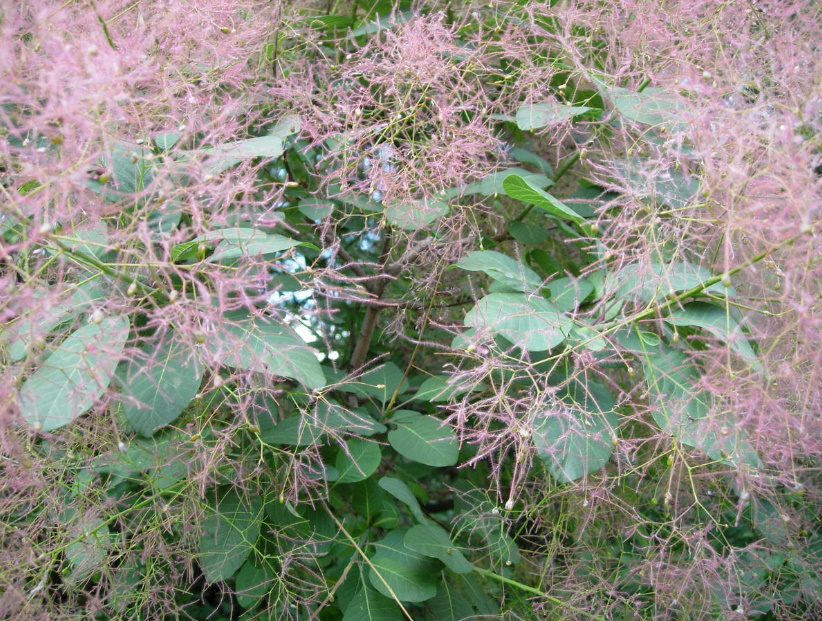
At first, the seedlings grow quite quickly. Already in the third year, the height of the bushes can be 2 m. Adult plants have a height of 2.5-5 meters.
If you managed to find a successful specimen, it is easy to propagate vegetatively. Layering that takes root in the first season works well. The most common green cuttings in May – June, with planting in sand or perlite. To form a lush crown, pruning of lateral branches is used for 2/3 of the annual growth. Thinning may be required with age.
Features of scumpia and its use in garden design
Interestingly, the shoots secrete milky juice when broken. Scumpia branches rarely reach large sizes, but you can make good crafts out of them. Wood is not susceptible to rotting and is preserved for a long time due to the presence of tannins. The beautiful yellow color is provided by the dye fizetin. In ancient times, they dyed wool and leather in yellow and orange colors. But most of the tannins, up to 20-30%, contain young leaves. Therefore, dried leaves were also a very valuable commodity. Today they are used as raw materials for the production of tannins and gallic acid.
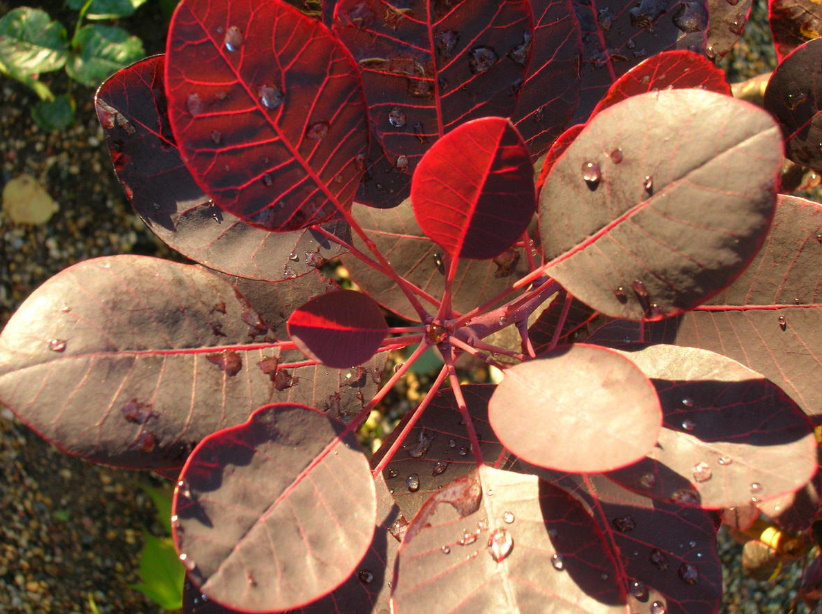
For proper placement in the composition, it is worth considering some biological features of the scumpia. In nature, it most often grows on mountain slopes, in pine and oak forests, forms shrubby thickets with juniper, turf, clematis. It is a long-lasting light-loving plant that does not tolerate waterlogged and acidic soils. To land in the middle lane, you need to choose the warmest and sunniest areas. It can be used in a tree and shrub mixborder or independently on the lawn. The diameter of the crown of an adult bush can be 2-4 meters.
Decorative leaf forms, most likely, can be grown in the form of a bunch of shoots from the root neck. They should be planted in a flower garden or in a year-round composition with turf and forsythia, with strong annual pruning. Shelters turned out to be ineffective, young shoots are still not preserved. You can only mulch the soil around the bush with compost.
Scumpia reveals its capabilities better in the southern regions. But it is quite possible for an enthusiastic gardener to grow this exotic guest in the temperate zone.
